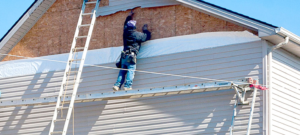Dental is the science of teeth and gums. Those who choose to pursue dentistry have a deep interest in the health of their patients.
When a tooth is lost, bacteria attack the surface of the hard enamel and create acids that erode it, creating tiny openings or holes (called cavities). The acid can also damage the next layer — the dentin — making the tooth even more sensitive. For more information, click the link https://bocadentallasvegas.com/ provided to proceed.

Tooth decay is a process by which bacteria in the mouth produce acids that destroy tooth enamel. This can lead to a hole in the tooth, called a cavity, and ultimately cause pain, infection, and even tooth loss. Tooth decay can be prevented by brushing, flossing, and regular dental visits. It is also important to drink fluoridated water, and to limit sugary drinks and foods. Researchers are studying new means to prevent tooth decay, including chewing gums that contain the sweetener xylitol and materials that slowly release fluoride and help protect teeth. They are also working on a variety of tooth filling materials that can reverse and “heal” early cavities. They are especially interested in a material that could be placed in pits and fissures of the teeth, where they are most vulnerable to decay.
A cavity starts when the bacteria in plaque attack tooth enamel. The acid breaks down the enamel and softens the dentin, the inner layer of the tooth. As the enamel and dentin break down, the bacterial by-products continue to attack the enamel and soften it. This weakened enamel is then more susceptible to further decay. The acids can eventually reach the softer interior of the tooth (the pulp), which contains blood vessels and nerves. The pulp can become swollen and irritated, and can no longer expand with the tooth during chewing. This can lead to a crack in the tooth and a root canal, which is often necessary for survival of the tooth.
As the decay continues, the enamel erodes further and the hole gets bigger. Bacteria then enters the softer center of the tooth and attacks the pulp. This can cause severe toothache as the bacteria attack the nerve. The tooth may become brittle, and the patient can experience sensitivity to hot, cold, or sweet foods and drinks. The bacterial invasion can also cause infection in the gum tissue and bone surrounding the tooth.
The most common treatment for a tooth with a cavity is a root canal. In this procedure, the dentist removes the decayed pulp and replaces it with a natural-looking tooth filling material.
Gum Disease
Gum disease is a bacterial infection that affects the gum tissue and bones that support your teeth. It can lead to tooth loss, and it has been linked to many serious health conditions, including heart disease, diabetes, gastrointestinal problems, and even cancer. If you have gum disease, regular dental cleanings and daily brushing and flossing are essential to treating it and keeping it under control.
Gingivitis is the earliest stage of gum disease. Symptoms include red and puffy gums, bleeding with brushing, and a sticky film called plaque over your teeth. If left untreated, gingivitis can advance to a more serious form of gum disease called periodontitis. Periodontitis causes bone loss in the jaw and mouth, and it is more difficult to treat.
Studies have shown that people with gum disease have a higher risk for coronary artery disease. This is because bacteria from the gums enter the bloodstream and travel to distant parts of the body, where they can cause inflammation and a build-up of fatty deposits in the arteries. The fatty deposits can clog the arteries, which increases your risk for stroke and heart attack.
Another way that gum disease may contribute to other health problems is by increasing your risk of dementia and Alzheimer’s disease. This is because of the inflammatory effect that bacteria associated with gum disease have on the brain. The inflammatory substances released can increase the accumulation of beta-amyloid plaques in the brain, which can lead to memory loss and cognitive decline.
There are a variety of treatments for gum disease, from a routine cleaning to flap surgery. Your dentist or periodontist may recommend antibiotics to reduce infection, promote healing, and suppress destruction of the tooth attachment. Chlorhexidine (Peridex, PerioChip, or Periodontal Gel) is an antimicrobial that can be applied to the gums as a rinse or gel, or placed in pockets as a gelatin-filled chip that releases medication over 7 days. Other antibiotics such as tetracycline, minocycline, or doxycycline may also be used to reduce infection and control symptoms. Some people with advanced gum disease may need bone and tissue grafts to restore stability to their teeth and jaw.
Tooth Pain
The sensation of pain is an important signal that tells the body something needs attention. However, it can be difficult to know what exactly is wrong, especially if the pain comes and goes. Pain in a tooth is most likely caused by an infection, but it can also be the result of dental decay, a cracked or chipped tooth, gum disease or even trauma. Fortunately, most tooth pain can be prevented by practicing good oral hygiene and taking care of your teeth and gums.
Tooth pain can be very different from person to person. Some may experience sharp, shooting pain while others might feel a dull, constant ache. Whatever the type of tooth pain, it is crucial to visit your dentist right away. They will ask detailed questions, examine your mouth and perform X-rays to determine the source of the pain. They may also prescribe medicine to manage the pain.
A common cause of tooth pain is an injury to the tooth. This can be anything from biting down on a hard object like a cherry pit or getting hit in the face during a sports game. Sometimes, tooth pain from injury doesn’t show up until days or even years after the event.
An infection in the inner part of a tooth, called the pulp, can also cause pain. This may be reversible, such as when a root canal treatment is performed, or irreversible, like in the case of pericoronal and periodontal abscesses. These are pockets of pus that form in the bone and tissue surrounding a tooth.
Other causes of tooth pain include the temporomandibular joint (TMJ), which hinges your lower jaw to your skull. Symptoms of TMJ pain usually come and go, but they can be severe. TMJ pain is often accompanied by headaches. To prevent TMJ pain, you should avoid eating food that is very hot or cold, use a soft toothbrush and a water flosser and rinse your mouth with a low-sugar mouthwash. You should also see a dentist for regular cleanings and X-rays. In addition, you should not grind your teeth as this can lead to TMJ pain and other issues.
Flossing
Flossing is a key component of a healthy mouth. It removes food particles that can cause bad breath and breaks up plaque before it hardens to tartar. It also helps prevent gum disease and provides a better overall oral health. Lastly, flossing can help lower your blood pressure as researchers have found a connection between good dental hygiene and heart health.
The best part is that it’s a simple habit to learn. Most people start flossing with their baby teeth and continue as a lifelong practice. It is recommended that you floss at least once per day before bed to remove bacteria and food between teeth. Some people like to floss first thing in the morning, while others carry a packet of floss with them throughout the day to maintain a consistent habit.
In addition to brushing, flossing is important for preventing cavities and reducing the risk of gingivitis and periodontal disease. Plaque is a sticky substance that contains food particles and bacteria that can irritate the gum tissue and lead to gingivitis, which causes red, puffy, tender gums. It can also erode tooth enamel, which leads to decay.
Dental floss is a thin piece of thread made of silk, nylon, or Teflon that can be waxed or unwaxed and flavored or unflavored. It is used to clean between teeth, along the gum line, and between dental prosthetics such as bridges or implants.
When flossing, it is important to remember that there are two sides of each tooth space and to make sure to floss around the entire surface of each tooth. To do this, you will need to wind a section of floss about 18 inches long between your thumbs and index fingers. Next, pull the floss taut and gently guide it between each tooth using your index finger. When you get to the last tooth, wrap the floss into a “C” shape and use it to rub the surface of the tooth and the surrounding gum tissue.
It’s also important to note that while flossing is a great preventive measure, it should not be used as a substitute for brushing your teeth twice daily for two minutes each time. Regular flossing, brushing, and the proper use of mouthwash can help to prevent gum disease, tooth decay, and bad breath.



